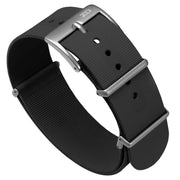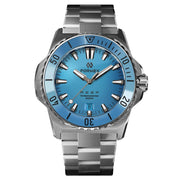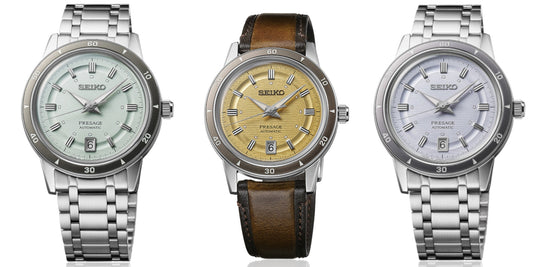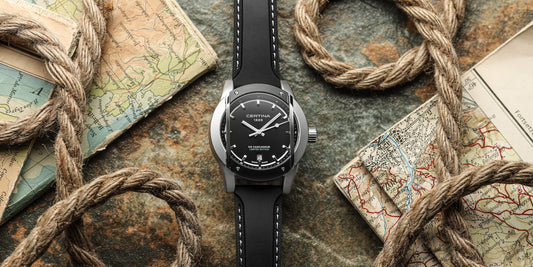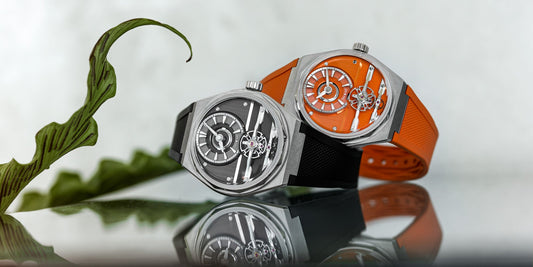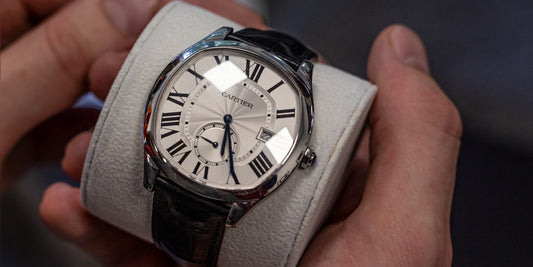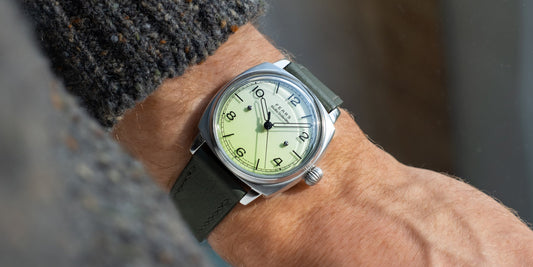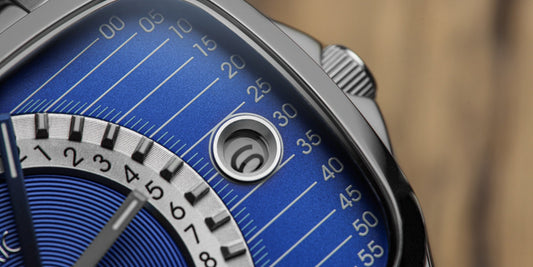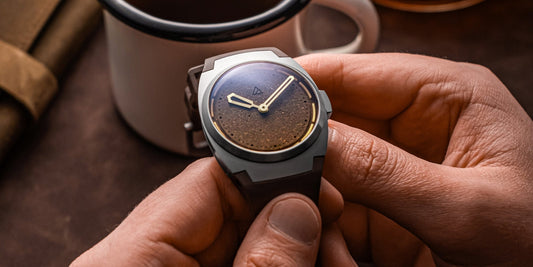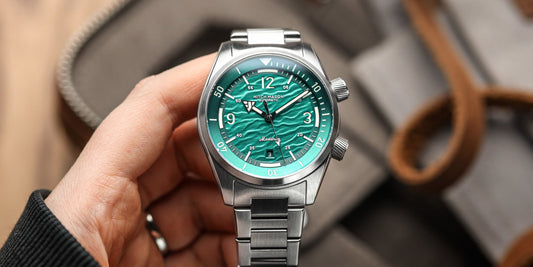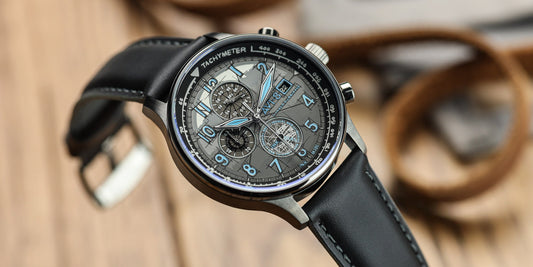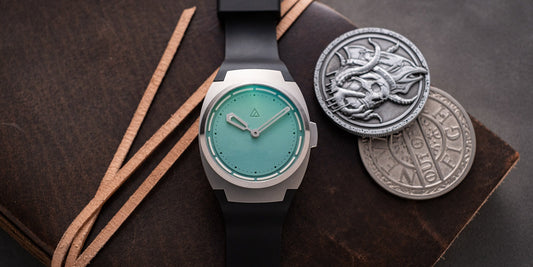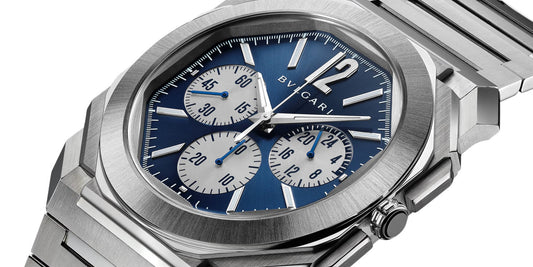We live in an industry of buzzwords. Unique. In-house. Exclusive. Everywhere we turn, brands are selling us an extremely diverse array of products using an extremely limited vocabulary. For newcomers to the world of watchmaking, it must be very much like learning a new language. Figuring out how to decipher press releases, that often seem to be written in a stream of esoteric code, is a skill in itself. Of course, it doesn’t help that many of these words are frequently (and often deliberately) misapplied.


Unique is used as if it were synonymous with “different”. More than one brand has almost destroyed its reputation by claiming something was done “in-house” when, in actual fact, it was (at best) produced proprietorially for them by a specialist component supplier. Exclusivity rules have been known to wane when, for example, a “boutique exclusive” failed to sell via the intended channel and thus ended up being funnelled out the back door to anyone who could be bothered to shoulder the burden of selling it.
And then there’s the word “sustainability”. Perhaps more than any of the terms listed above (and the countless others like them that exist in the horological universe), the word sustainability isn’t just important when it comes to selling products today, but also how the industry will operate in the future, as ever-more environmentally conscious buyers become the overwhelming majority rather than the green-curious minority they currently represent.
Unsurprisingly, brands have been quick to jump on the sustainability bandwagon. Little things like recyclable packaging, the promise to donate a portion of profits to XYZ environmental cause, and commitments to, for example, planting trees for every watch sold are not to be sniffed at — they are, after all, steps in the right direction, but don’t address the production of the watches themselves (and, although frequently overlooked for obvious reasons, how those watches make it from the factory to wearers’ wrists).
We’ve seen brands shine a light on environmental issues by creating aesthetic components that don’t require micron-precise tolerances out of reclaimed materials such as PED plastics. Case backs, straps, and even dials have been made from waste materials to great effect. Whenever anything would otherwise end up in landfill can be crafted into something that will be cherished and used by a paying customer, it’s better than adding to the mountains of trash that proliferate certain regions of our planet.




And yet, the question must be asked, how “good” for the environment are these initiatives? Do they even qualify as “good” or are they simply “less bad”? More worrying still is the prospect that these efforts, as well-intentioned as I’m sure most of them are, aren’t actually any better than the traditional manner of manufacturing due to the costs and fuels associated with the collection, processing, and finishing of the materials in question.
Greenwashing — the practice of claiming sustainability for reputational gain when, in fact, the sum total of the endeavour does not amount to any tangible change in environmental impact — is a scourge on watchmaking currently. It is, in this writer’s opinion, more annoying (and ultimately damaging to the green movement) than not even bothering to try at all. I believe that in principle, because it obfuscates real change. Amidst a crowd of brands claiming to “do the right thing” by the planet, how is a customer really able to find the wheat among the chaff?
The best example I can think of when it comes to greenwashing is the claim that a brand uses “recycled steel”. The issue here is that all steel is, at least in part, recycled. Around 60% of steel is recycled but since more steel is being made than scrapped, that equates to roughly 40% of “new steel” having had a former life in another form.
That’s great, and all — a “closed loop material ecosystem” like steel’s is about as efficient a heavy industry as one can currently hope for, but for brands to suddenly communicate that their steel is recycled without taking pains to up the percentage of recycled steel used in the production of their cases is disingenuous, to say the least.
Thankfully, the more responsible brands are doing that. As soon as a steel watch case comprises 80%+ steel (preferably more than 90%), it really is better than standard. But even then, should brands be satisfied they’re doing enough? Even though the argument that luxury watches are, themselves, a sustainable product because of their ability to run and run and run with minimal intervention holds significant weight with me, the massive transportation network required to deliver watches around the globe needs quite some off-setting to become a non-issue (or at least a palatable one).
And so in light of the challenges presented by humanity’s somewhat “naughty” behaviour (read: potentially apocalyptic), which brands are going above and beyond what is expected of them in this era of increased awareness, and looking ahead to a time when climate concerns are not just the preserve of the engaged and informed, but also a daily threat to existence as we know it?
In my opinion, the finest among the major players in this regard is Ulysse Nardin. Long known for its connection to the ocean, UN has been taking pains to “give back” to the world that has inspired so many of its legendary timepieces throughout its long and storied history.
Now, not every brand can do everything (and certainly not all at once), but Ulysse Nardin’s commitment to good environmental practices is extremely laudable. And it takes many forms — most of which are listed above.
In terms of materials, Ulysse Nardin has used nothing but responsibly sourced gold since 2017; all diamonds purchased by the brand subscribe to the “Kimberly Process”, which ensures ethical sourcing practices and guarantees that the diamonds used in its timepieces have not funded armed conflicts; the brand uses Carbonium®, which makes use of offcuts from the aviation industry, and recycled fishing nets (which are mainly made of polyamide) for the cases of its most environmentally conscious models yet; straps too, are also sometimes made from recycled fishing nets (of which 640,000 metric tons are lost or abandoned at sea every year); and, perhaps one of my personal favourite facts (because it is the most ignored aspect of sustainability in watchmaking, in my opinion), is that over 95% of the components that go into making the UN-118 calibre are sourced within a 30 km radius of the Manufacture, with half of them coming from recycling channels.


Of course, it’s fair to ask where UN’s suppliers sourced the materials from (something we will do the next time we sit down with one of the brand’s top brass), but it is at least something that UN is aware enough of the many layers of questioning a brand should expect to endure these days to at least mention their “farm-to-table” approach (and I would aver that the brand’s willingness to mention it knowing that cynical hacks like me will see it as an opportunity to drag them over the coals rather than give them a cheery smile and blithe wave and set them off to go about their business unquestioned suggests they have a satisfactory answer locked and loaded).
Beyond the material side of things, Ulysse Nardin is also known for its active role in ocean conservation and for being a supporter of the “1% for the Planet” movement started by Yvon Chouinard, founder of Patagonia, in 2002. The brand is also the official partner of the Ocean Race as well as Ocearch, the world’s leading scientific shark conservation NPO.

Meaningful change is always hard to quantify, but Ulysse Nardin is at least able to look at its catalogue and point to certain models that have tangibly played a part in reducing the plastic waste found in our oceans. The brand can look too at its partnership with Ocearch and know that its contribution is helping the scientific community better understand the behaviour of sharks with a view to protecting their numbers from further depletion. At the very least, Ulysse Nardin can be proud of the light it is shining on this still nascent area of our industry, and will no doubt continue to lead from the front as we strive towards more responsible practices across the board.



















